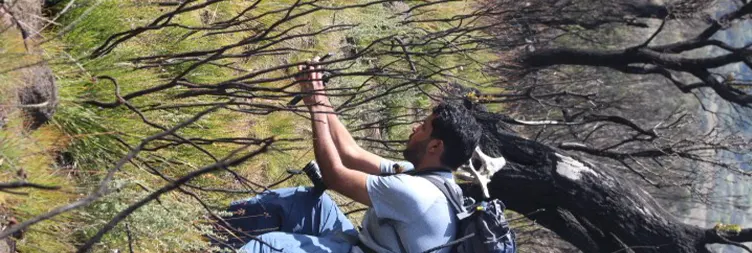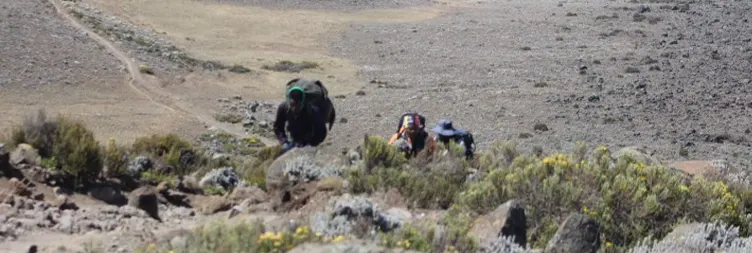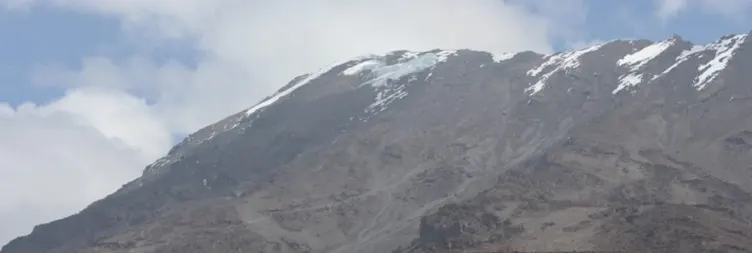Day 1: Marangu Gate to Mandara Hut

Your journey begins at the Marangu Gate, where you'll undergo necessary registrations and meet your experienced guides and porters. The trek commences through lush rainforests, filled with a remarkable array of flora and fauna. The first day's hike covers a distance of approximately 8 kilometers (5 miles) and takes about 4-5 hours to reach the Mandara Hut, where you'll spend the night.
Destination: Marangu Gate To Mandara Hut
Accommodation: Mandara Hut
hut
Meals & Drinks: Lunch, Dinner, Drinking water
Day 2: Mandara Hut to Horombo Hut

Leaving the Mandara Hut behind, you'll venture further into the mountain's diverse ecological zones. The trail leads through the enchanting heath and moorland, offering captivating landscapes and a chance to spot unique plant species. This leg of the trek spans approximately 12 kilometers (7.5 miles) and takes around 5-6 hours to reach the Horombo Hut, your resting place for the night.
Destination: Mandara Hut To Horombo Hut
Accommodation: Horombo Hut
hut
Meals & Drinks: Breakfast, Lunch, Dinner, Drinking water
Day 3: Acclimatization Day at Horombo Hut

To enhance your chances of reaching the summit successfully, day 3 is dedicated to acclimatization at the Horombo Hut. It's crucial to give your body time to adjust to the increasing altitude. During this day, you can explore the surroundings, enjoy the breathtaking views, and take short hikes to higher elevations. This process aids in acclimatization, improving your chances of a successful summit.
Destination: Horombo Hut To Kibo Hut
Accommodation: Horombo Hut
hut
Meals & Drinks: Breakfast, Lunch, Dinner, Drinking water
Day 4: Horombo Hut to Kibo Hut

As you resume your ascent, the landscape transforms into an alpine desert. Vegetation becomes sparse, and the terrain becomes steeper. The trek from Horombo Hut to Kibo Hut covers a distance of approximately 10 kilometers (6.2 miles) and takes around 6-7 hours. Kibo Hut, situated at the base of the Kibo crater, will be your basecamp before the final push to the summit.
Destination: Horombo Hut To Kibo Hut
Accommodation: Kibo Hut
hut
Meals & Drinks: Breakfast, Lunch, Dinner, Drinking water
Day 5: Kibo Hut to Uhuru Peak and Descent
Day 5 marks the pinnacle of your adventure, as you make your way to the summit of Mount Kilimanjaro – Uhuru Peak. The final ascent is both physically demanding and mentally challenging, but the breathtaking sunrise from the rooftop of Africa makes it all worthwhile. After celebrating your achievement at the summit, you'll begin the descent, passing through Kibo Hut and continuing down to the Marangu Gate.
Destination: Kibo Hut To Uhuru Peak To Horombo Hut
Meals & Drinks: Breakfast, Lunch, Dinner, Drinking water
TOUR PRICE/COST
We offer two pricing options:
The cost is shared within your private group. More people means a lower price per person.
Join others on a fixed-date tour at a set per-person rate—ideal for solo travelers or small groups.
Private (Shared) Price
| No of pax | Adult | Child |
|---|---|---|
| 1 pax | $1,220 pp | $915 pp |
| 2–4 pax | $1,195 pp | $896 pp |
| 5–9 pax | $1,170 pp | $878 pp |
Group joining price
| Adult | Child |
|---|---|
| $1,195 pp | $896 pp |
PRICE INCLUSIONS & PRICE EXCLUSIONS
InclusionsThe Booking Form

5 Days Kilimanjaro
N.B: After you send your booking we will get back to you with in 24 hours.
.webp)
.webp)
.webp)
.webp)
.webp)
.webp)
.webp)
.webp)
.webp)
.webp)
.webp)
.webp)
.webp)




